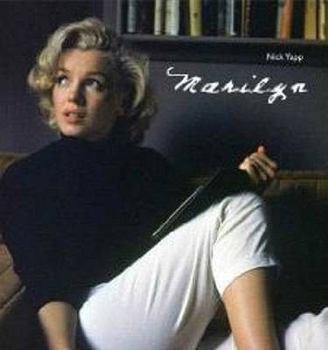Marilyn
Beautifully illustrated with rare and unpublished material, Marilyn recounts the life of one of America's most loved actresses. This is the unseen and beloved Marilyn from childhood to Hollywood from... This description may be from another edition of this product.
Format:Hardcover
Language:English
ISBN:1873913125
ISBN13:9781873913123
Release Date:January 2009
Publisher:Endeavour London Ltd
Length:176 Pages
Weight:4.35 lbs.
Dimensions:11.5" x 0.8" x 10.8"
Customer Reviews
2 ratings
big picture book
Published by Thriftbooks.com User , 15 years ago
This is one of those oversized, coffee-table books you can usually find in the bargain bin. It's mostly pictures, all glossy. What little text there is, by the way, is of a very simple level, making this a perfect book for someone who is just interested in looking at pictures. Of these, there are the standards, of course, but also many you've probably never seen before.
A fascinating pictoral history of the Russian nation in the twentieth century
Published by Thriftbooks.com User , 17 years ago
During my second trip to what was the Soviet Union in 1992, a member of my delegation looked at the lines at the shops and said, "How can the Russian people ever forgive Lenin?" My response was, "They can also blame it on Stalin." Whether you call it the Russian Empire, the Soviet Union or just Russia, the history of the country is a bloody and brutal one. When under the control of the Tsars, the people had little freedom and there was always the danger of being deported or hanged if you were too loose with your tongue. However, that was a paradise compared to the events after the Romanov dynasty was overthrown in 1917. The civil war was largely one of extermination, as the Red and White sides eliminated anyone with the appearance of opposing them. Many people resorted to cannibalism in order to survive; the photo on page 151 depicts a couple with pieces of human bodies on a table in front of them. Yet, in the height of the Stalin years, it was to get even worse. In a program of planned genocide, millions of people were deliberately starved to death in order to export grain to pay for imports needed for modernization. If you include the number of people who were shot or worked to death, then the number could be as high as 20 million. It was a government whose fundamental plan was to kill off entire groups in order to get them out of the way. Finally, as amazing as it sounds, the worst had not yet arrived, that took place after the German invasion in 1941. As soon as the frontline German troops advanced, the killing groups followed. It was one of the greatest errors ever made by Hitler when he made no attempt to exploit the anti-Stalin feeling in places such as the Ukraine. The official German policy of exploitation/extermination caused the people to resist them in all possible ways. Finally, after Stalin mercifully died, things began to get better, although his henchman Beria had to first be killed. Although they all had blood on their hands as well, the subsequent leadership class of the Soviet Union blamed Stalin for the excesses and relaxed the terror. People were once again exiled rather than killed and the lives of the citizenry improved. All of the history is chronicled in this book. Using photographs, many of which came to light only after the fall of communism, Moynahan describes life in Russia during the twentieth century. It is a brutal history; it is impossible at times to conceive of the fact that the government systematically exterminated entire populations in order to pursue their policies. The most significant fact of all is that the high grain harvest of 1913, done almost exclusively by hand and with animal power, was never again equaled in the twentieth century.





